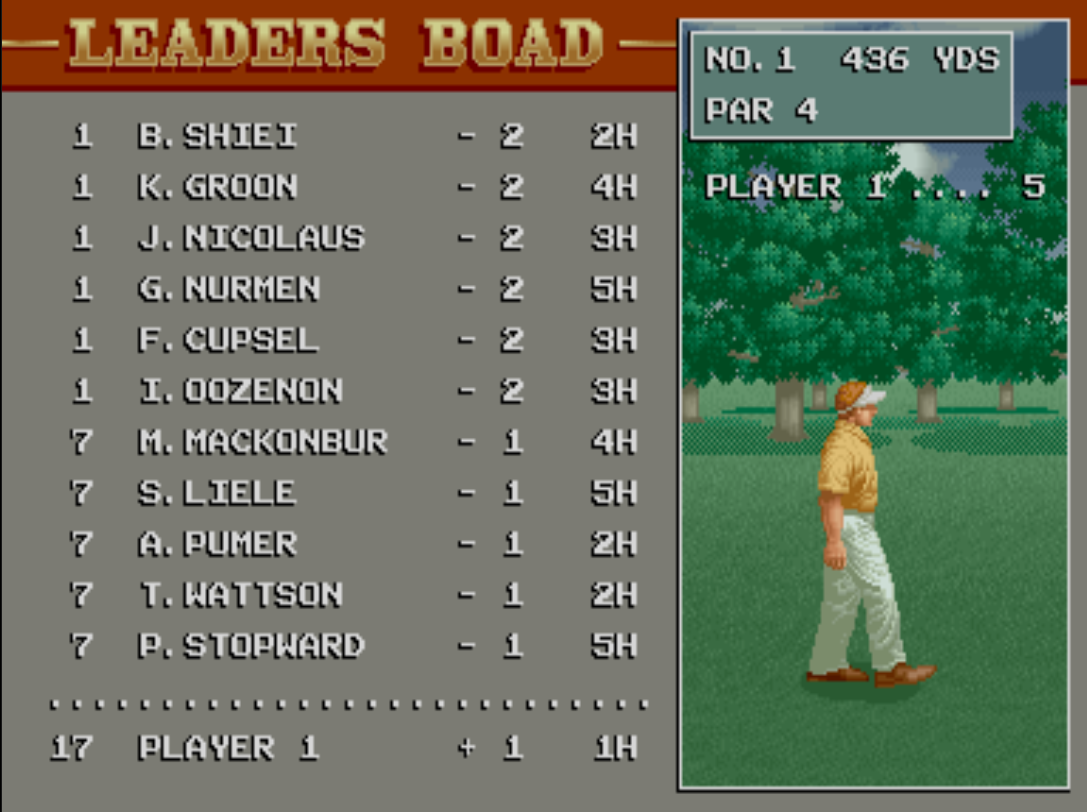Hitting a ball with a big stick into a small hole in some finely manicured grass. Sandpits, babbling brooks and a stroll through some countryside. When you make a complex sport pick up and play, do you pick up the appeal with it? The arcade would like to demonstrate – well, at the very least argue its case – that you can be immediate, engaging and produce a high skill ceiling.
The journey begins in 1981. We wander into Data East territory. The offering is Tournament Golf (18 Challenge Pro Golf in Japan). Powered by the DECO cassette format, it would be unreasonable to expect a complex swing mechanic, the application of spin or the implementation of wind; what you would perhaps be forgiven for expecting is something that vaguely looks like a golf course. Instead, you are greeted by a drag racing strip with bunkers and water hazards vomited at random on it. Your avatar gives even the putter a full swing. No aiming occurs, but when you’re approaching the green the overhead camera aggressively rotates until you’re aligned with the cup. The ball makes a bemusing ding when it bounces, suggesting the surface is made of tin. Not a great start, then, but be honest; can you really expect the first attempt to get much right?
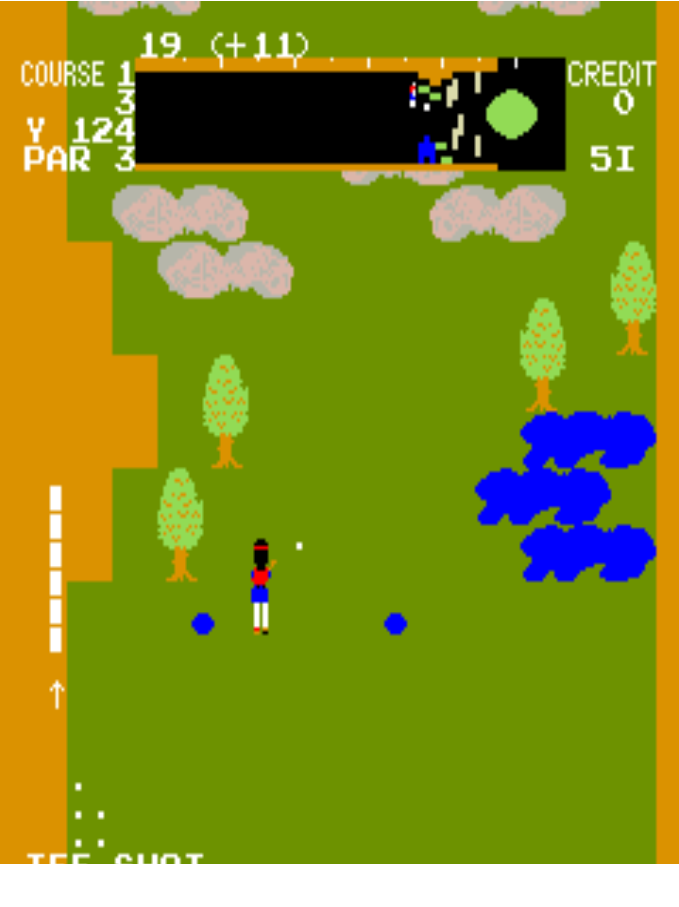
Time advances, and through 1982, 1983 and 1984, Taito engineering a trio of Golf cabinets: Birdie Try, Birdie Try 2: This Time It’s Personal, and Birdie Try 3: The Obligatory Time Travel One (subtitles may or may not be accurate). An unsurprisingly iterative affair each year, mirroring the model that is now de rigeur in Big Sports Videogame, several innovations land on our collective laps. The course structure is visible. The wind, she’s a-blowing. Shots can be sent in every which way you wish. That last point is due to innovation we will collide with a few times in this journey; the trackball. You fling the big dome in the centre of the cabinet, and the ball flings where you flung it. This in no way guarantees it lands where you wanted to, but that’s more of a you problem. The golf course never has a human on it, but your magical golf ball with traverse nonetheless. This sparse landscape is topped off with buzzards buzzarding around the place at all times. Any differences between the 3 games are essentially new coats of paint. So far, so much better: but how far can arcade golf go?
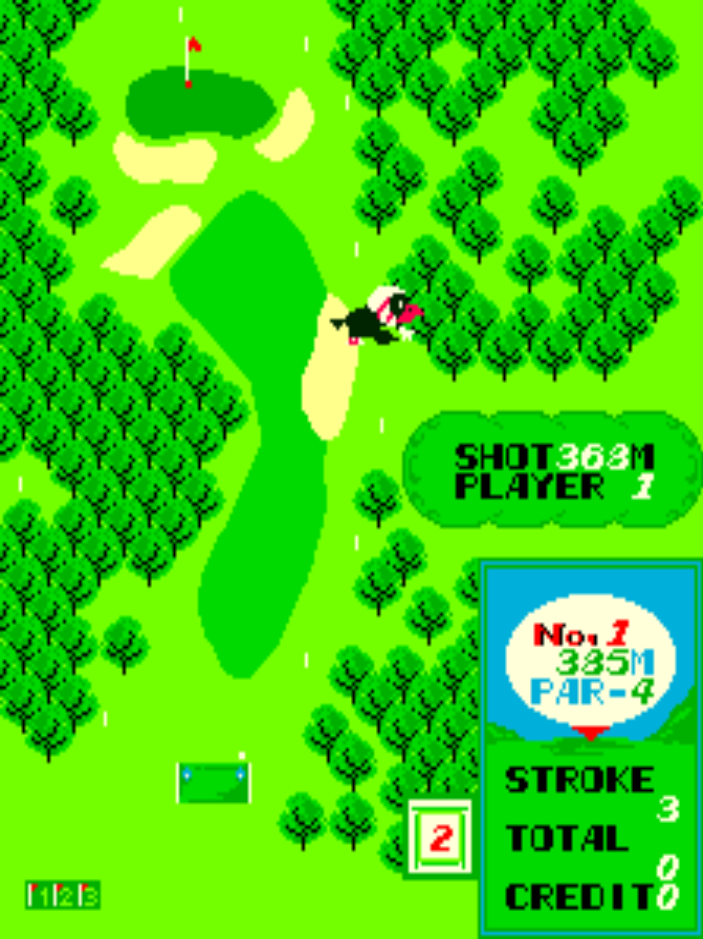
How about we add another dimension? Nasco’s (not a typo) Crowns Golf also released in 1984, as well as Data East’s next try in 1985, Competition Golf, place us behind the back of the golfer. Ok, so I may have lied slightly – this is not polygonal – but this perspective is a fresh catch for this journey. It immediately becomes clear tha the Data East effort is superior – Crowns Golf is mostly a watch-trees-get-drawn simulator – and the pieces are falling into place. The layout gains clarity and the swing mechanic is granular, affording the player better precision on club carry. This is the first one that I would spend some time with, jamming out to its one constant tune.
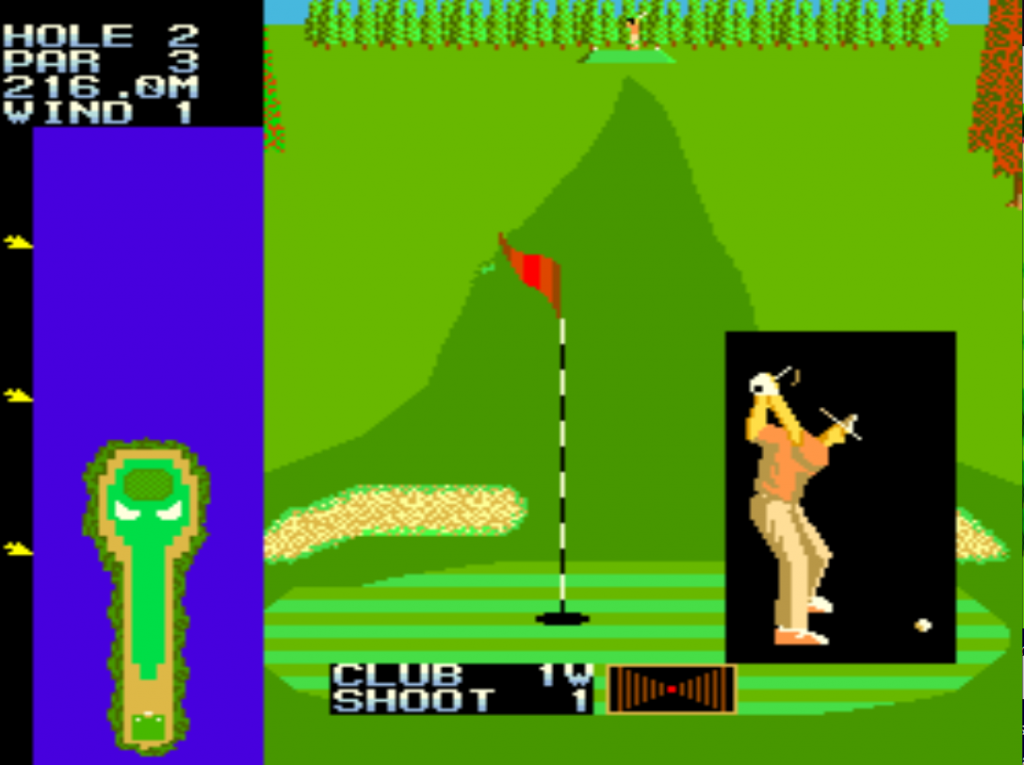
Another year, another company. In 1986, Tecmo is taking a stab at this woods, irons and putters lark. They swiftly return us to the Valley Of Trackballs, but the presentation is being notched up to eleven. Clean graphics, dirty tunes and an anime caddie lady (you had to expect this. It IS Tecmo, after all). No wheel reinventions are to be found here, though a deliberate sidespin selection tool allows you to compensate for your swing’s idiosyncracies. Another very playable one, as long you have a trackball available. Honestly, this caveat applies to all of the trackball-centric titles herein.
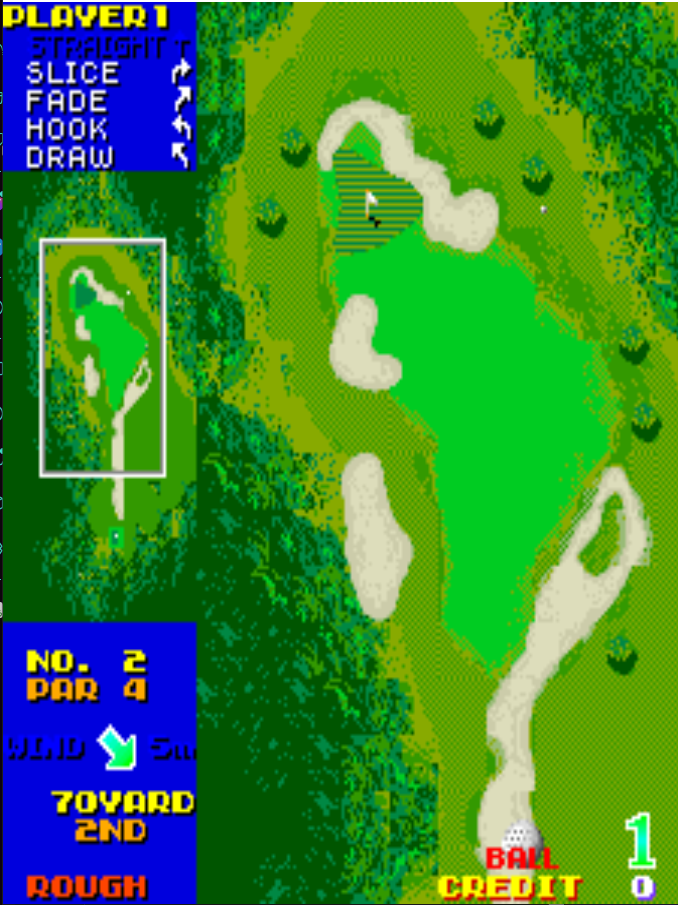
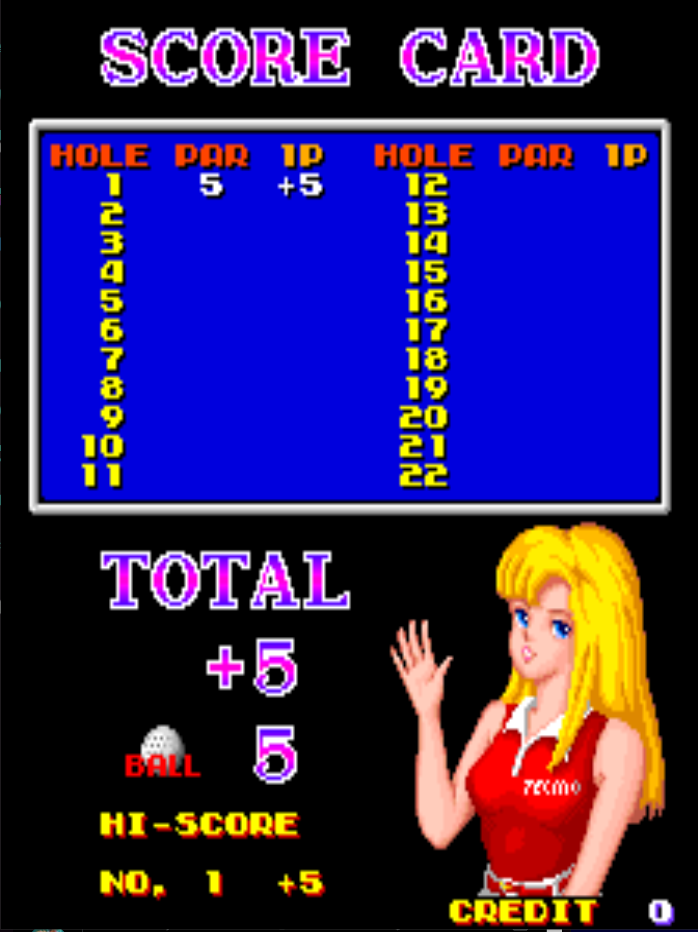
Let’s take our tea break between the 9th and 10th holes and address the elephant in the coin mechanism: how does golf, a traditionally 18-hole game, make you pay to play it? The answer in most cases is that you can keep going; if you’re good enough. The general rule seems to be that the game wants you to be keeping par at worst. Birdies and Eagles may will earn you extra holes of playtime, but if you want to play the whole 18 holes of a course, expect to pay anywhere between 2 and 10 credits for the privilege (even 18 credits if you get heavily punished for bogeys or worse), depending on your proficiency. Golf IS an expensive sport and hobby, so this only seems appropriate, frankly.
(Above and left, Tee’d Off, Tecmo, 1986)
All refreshed? Okay, let’s skip a few and enter the bodacious world of the 1990s. The American hero has arrived. Strata and Incredible Technologies bring the bling with the birth of Golden Tee Golf. A franchise that still has a dedicated community in 2022. While it eventually reached the realms of online leaderboards and fierce long-distance rivalries, its beginnings were more humble. 18 holes, a trackball or joystick, and prime real estate in sports bars turned out to be a potent cocktail. This is worthy of a deep dive of its own, along with their full suite of trackball-based shenanigans, but that will have to wait. Just know the standard-bearer going forward to the majority is this.
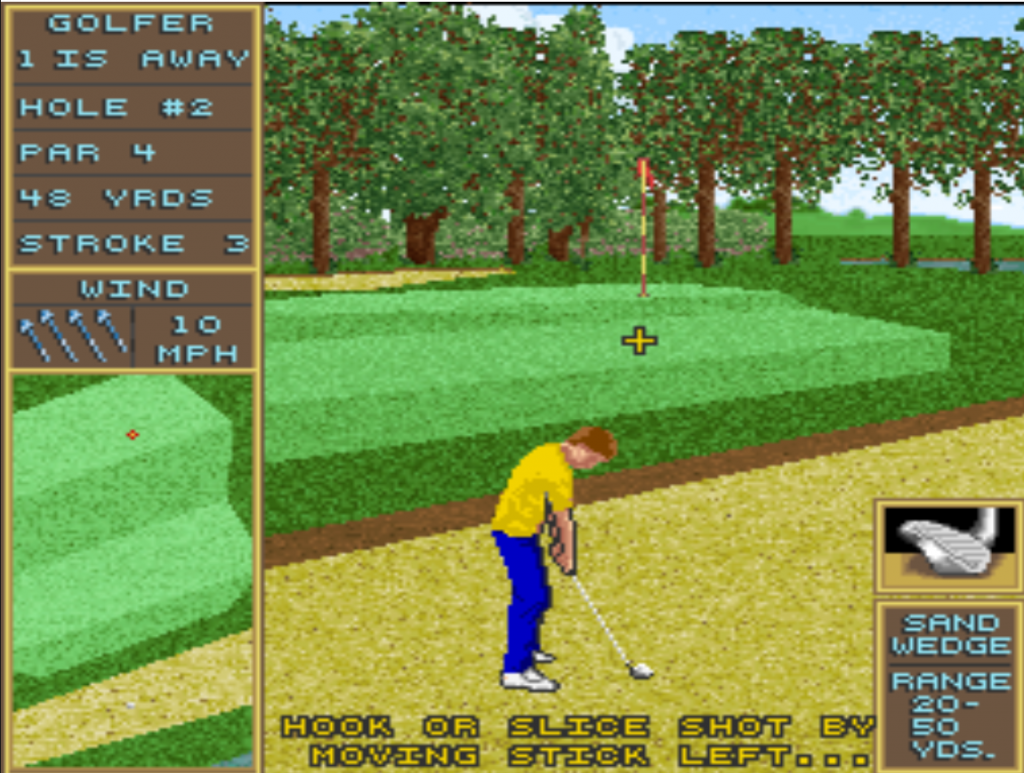
Let’s have a history lesson within this history lesson now. The next game is made by Irem. When a chunk of Irem staffers left, they formed Nazca. This name should be familiar to those who know The One True Arcade Golf Game. For now, let’s look at the progenitor of that behemoth, a little effort called Major Title. The design cues are clearly visible, although not fully polished in this iteration. This delivers a satisfying game of golf. No complaints to be made here.
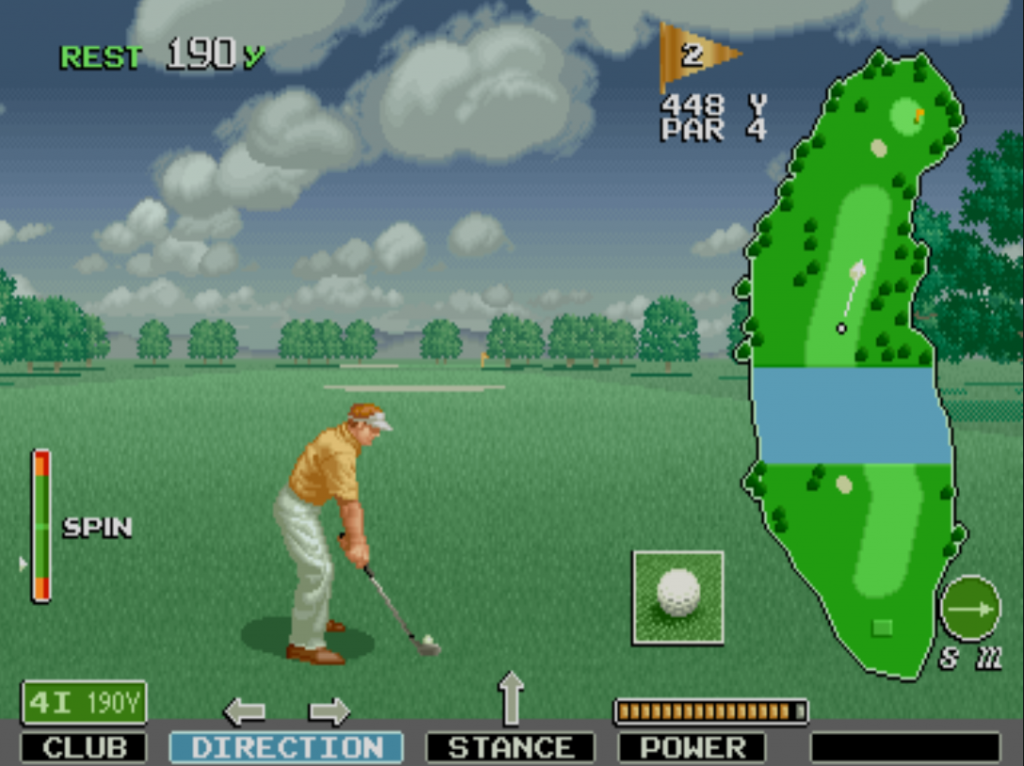
One of the traditional heavy hitters still hasn’t turned up to the fight. But in their peak prolificacy during the early 90s, Konami brought in some of their greats. Golfing Greats, to be precise. The camera adores rotating around 3D-effect sprites, Konami in full pixel-flex mode, as usual. This is one of the rare instances of the more traditional shot mechanics in golf games: The 3-click bar, which in this case is curved to emulate a swing’s arc. For added tactics, the system has a sweet spot, then a topspin and backspin zone so that you can inject some finesse. It looks great, and it plays a very solid game of golf, though the approach play requires a delicacy of touch that can feel unnatural at times. But hey, golf is hard. It has permission to perplex.
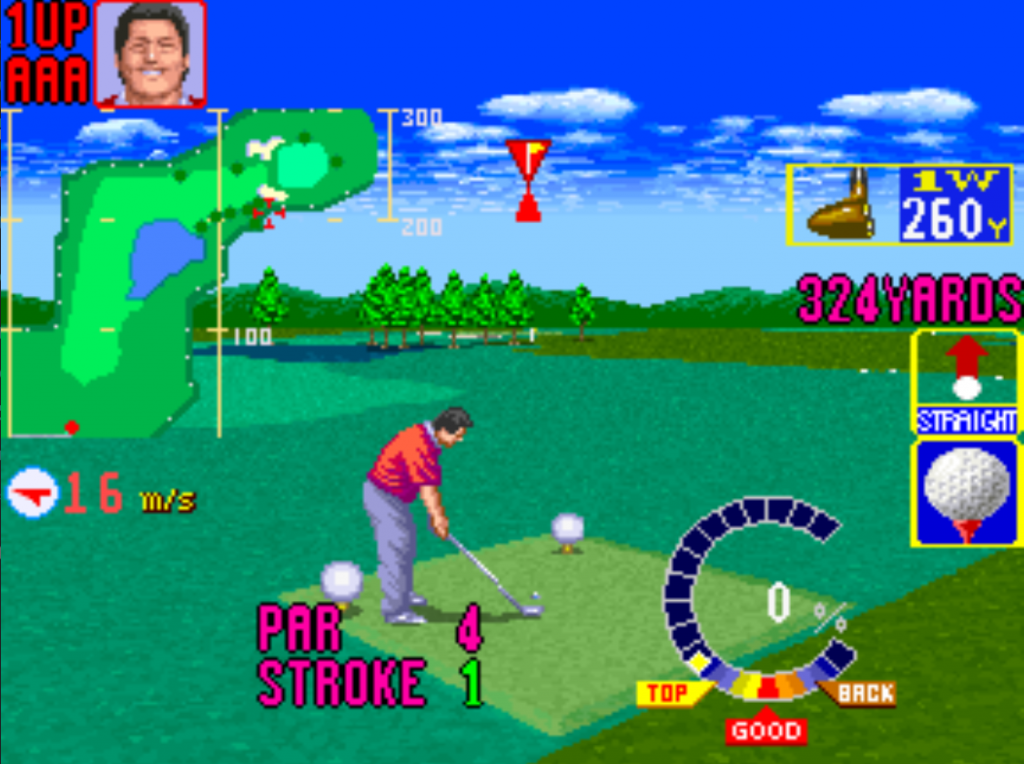
A few sequels come out through the next few years, as well as a few digitised attempts, like Seta’s Super Eagle Shot. Between copious WordArt and an unnecessarily complex-looking cyberpunk HUD, this falls neatly in the realm of Seta, Nichibutsu, T&E Soft and the like; that is to say, the Japanese bargain bin. That’s nearly as much of an insult as it sounds, as the games in this bracket remain functional and very playable, just with the added baggage of being rough around the edges and off-kilter. But let’s be honest, nothing we’ve seen so far is why you’re here. So here comes Nazca to bring you the blockbuster: Neo. Turf. Masters.
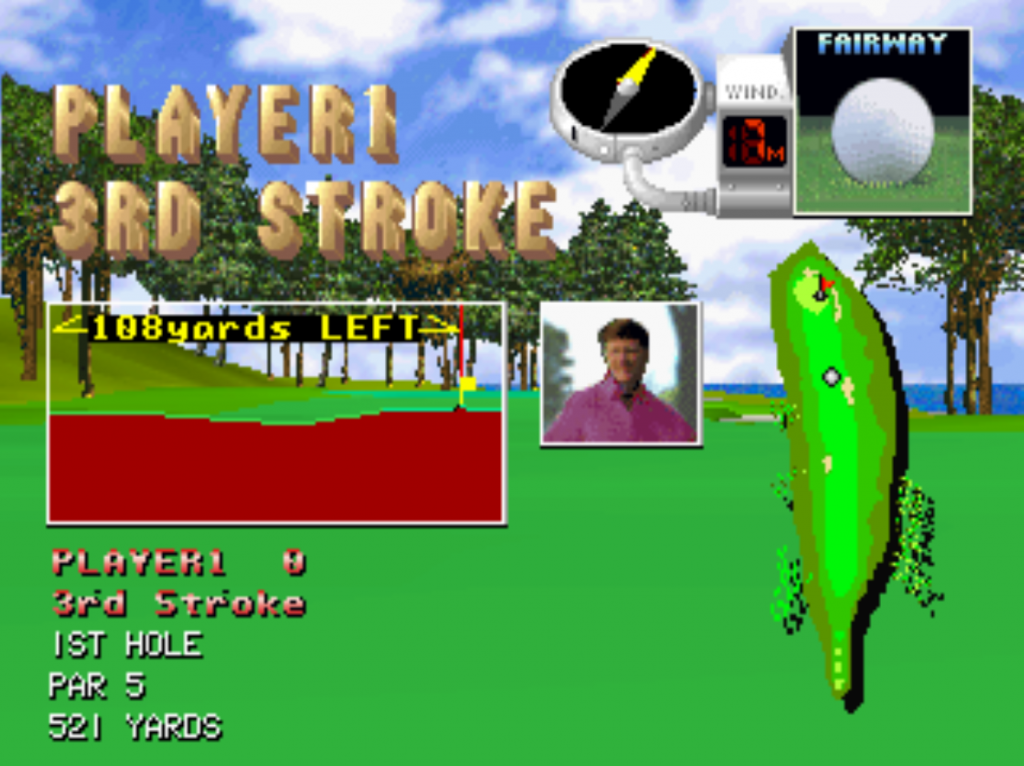
To many an arcade fan, Neo Geo lover, golf aficionado or simply person starved of emulation in the 2000s, Neo Turf Masters was a forever friend. We’ve had plenty of games so far that play a pretty good game of golf. Here, Nazca tightens up the gameplay to a tee and then attacks the audiovisual package with a firehose of style. Infectious jazz bangers; emotive, varied golfers; 4 formidable courses full of lush greens and blues – everything scrambles to put a smile on your face. Even if you have zero interest in golf, you will enjoy this game. Its upbeat mood is viral. This is up there with the very best golf video gaming has to offer, on par with Everybody’s/Hot Shots/Minna no [delete per your region] Golf, Mario Golf and PGA Tour games. The courses are challenging but (mostly) fair, mastery is achievable, and there’s even a competitive scene on Fightcade if you really wanna hit the links hard. If you only give one game from this potted history a chance, make it this one.
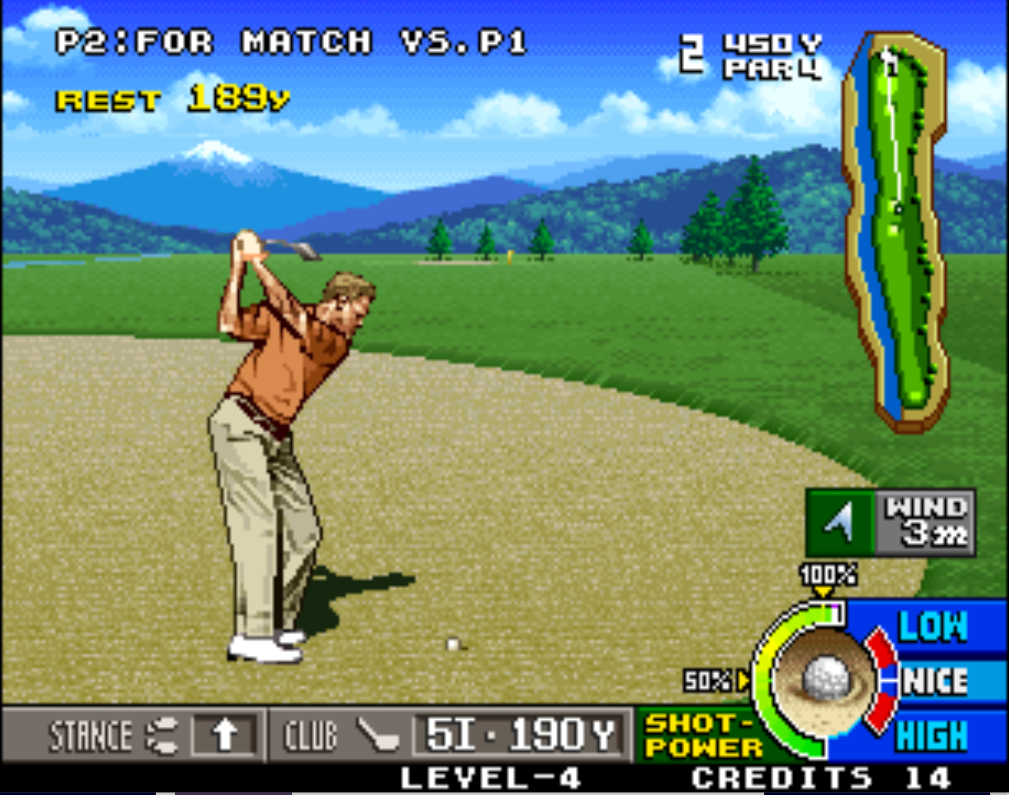
This is pretty much the end of the road. about 48.33 recurring Golden Tee Golf iterations come out in the 2000s, Sega has a couple of goes at trackball golf in this period too, but the most interesting one from the late stages of arcade development comes to us from Midway. Their attempt was Skins Game, mostly in the mould of their Blitz range of sports games. It has edge, it has ‘tude, and it has an analogue bat-top stick that is used to strike the ball. There’s a lot to like in it, but the trappings of Midway make themselves extremely known and given it was only downhill for Midway as a company from here, it did not become the franchise they’d shot for. It also allows you to pay money to mulligan a shot, which is hilarious and predatory in equal measure.

The arcade was overall a mixed bag of a format for fans of the green stuff. Some shining lights and some real aberrations. The legend of Neo Turf Masters lingers long in the memory, and in the US you might still bump into the odd Golden Tee cab, but otherwise, it certainly fared better elsewhere. But that’s a round of 18 for another day. Happy golfing!

